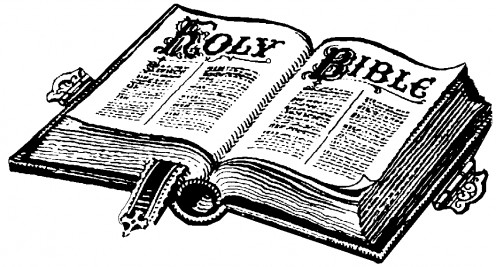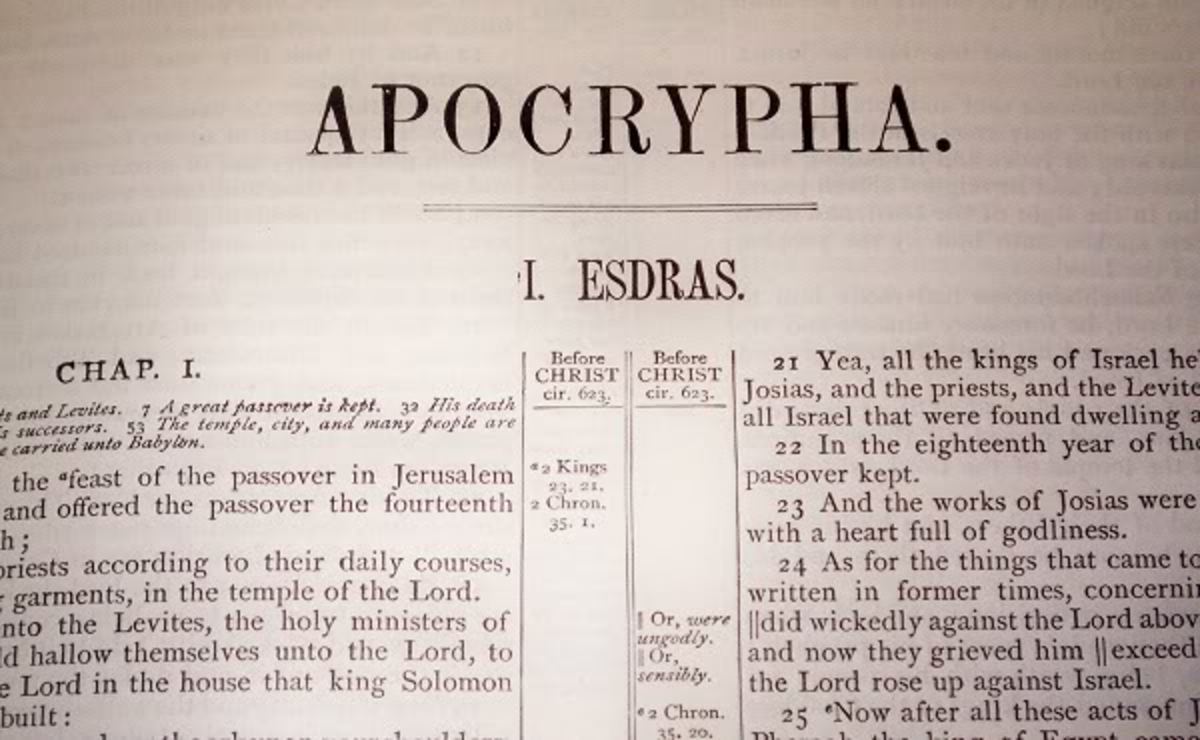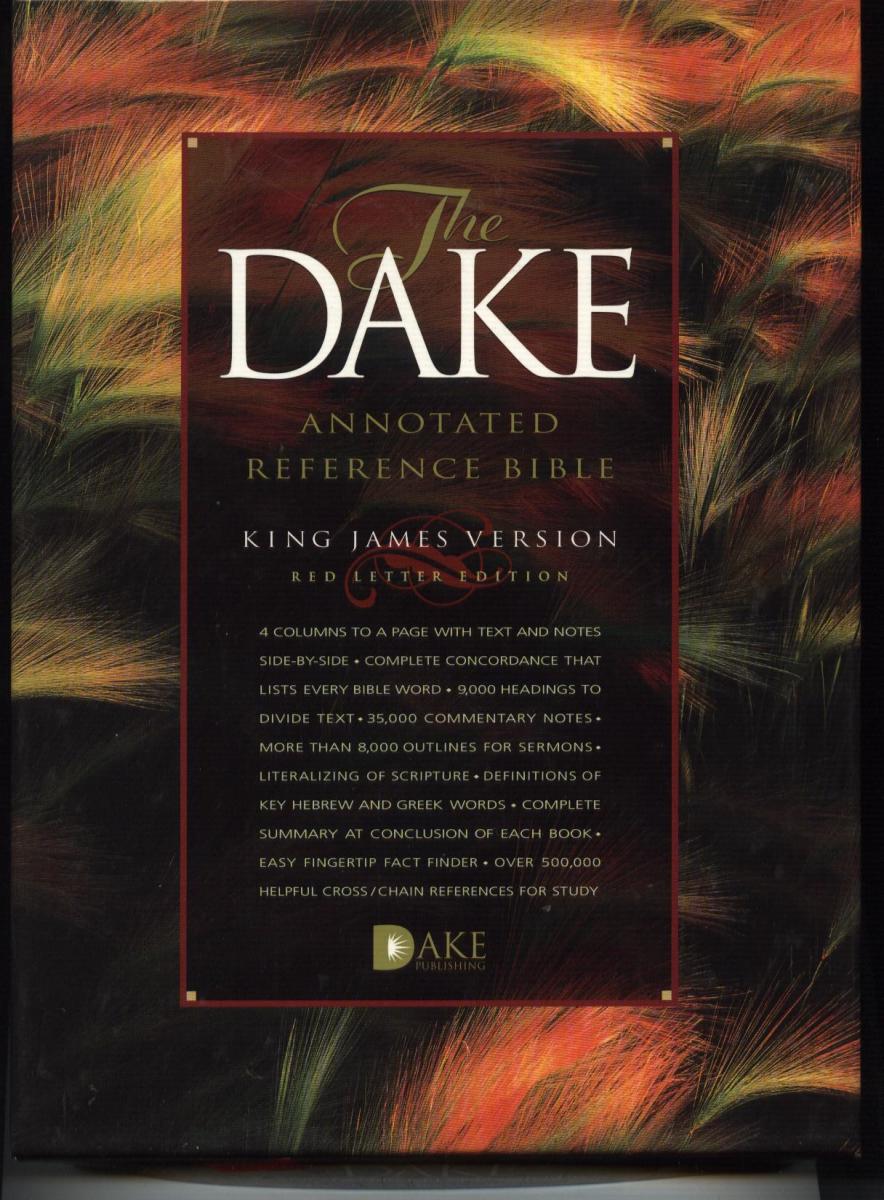A Brief History of the Bible (New Testament)
God's Word

Bible History
The Holy Bible, the foundation of the Christian Religious Faith. There is about one-third of the world’s population who follow the Christian faith and the bible. If you turn on the television on a Sunday morning, you will likely find a minister reading or preaching from the bible. The bible is a staple in the majority of homes in America and other countries throughout the world. The majority of us grew up in a church and reading or hearing about the bible, but how many of us actually take the time to learn how, where and why the bible that so many of us base our lives on came to be in the format we see today. It wasn’t always in the format that we know today, nor did it always contain the books that we are used to seeing. The Protestant Bible that many Americans are used to seeing contains sixty-six books, thirty-nine in the Old Testament and twenty-seven in the New Testament. The Catholic Bible contains seven additional books in the Old Testament, known as the Apocrypha. In this paper we are going to focus more on the books contained in the New Testament and only briefly touch on the Old Testament.
The Bible is divided into two sections, the Old Testament which is better known as the Jewish Bible and the New Testament. The Old Testament was written from about 1000-50BC (Professor Hahn). The Jewish version of the Old Testament contains thirty-nine books and was decided at the Council of Jamniah around 100BC and was originally written in Hebrew (Professor Hahn). The Old Testament would be translated into Greek around 200BC and would be known as the Septuagint (LXX) (Professor Hahn). The New Testament was written between 51-125CE and contains the Gospels, the Acts of the Apostles, the Epistles and the Revelation of John.
The Gospels are based on the teachings of Jesus; the Epistle’s are mostly writings of Paul and some of the early church leaders. Revelations is John of Pathos’ vision of heaven and the end of times as revealed to him by Jesus Christ. The authors of the Gospels and Acts are unknown, although Luke and Acts are claimed by the author to be eyewitness and unbiased researched to be an accurate account of Jesus and the book of John is claimed by the author to come straight from John the Elder. Of the nine letters attributed to Paul, only seven can be confirmed to be his, Second Thessalonians and Colossians is thought to be works by one of his disciples with Paul’s name used to add credibility (Harris). The remaining books of the New Testament are either unknown or pseudonymous (a common practice in Greco-Roman times).
Prior to further examination, let us look at the dates of when the books of the New Testament were most likely written. The first Gospel written was the book of Mark around 66-70CE with Matthew, Luke and Acts following between 80-90CE. The Book of John wasn’t written until around 90-95CE. With the Gospels being the teachings and stories of Jesus Christ, they were written thirty plus years after his death. The letters of Paul are some of the earliest Christian writings that are currently still contained in the bible today, with his writings dating between 50CE for the first book of Thessalonians and 62CE with the book of Philemon. The remaining books were written between 90-150CE with the books of Jude and second Peter being the last books written (Harris). The oldest fragment of the New Testament that we have to date is four verses from chapter eighteen of the Book of John written on papyrus and found in Egypt, it is dated to around 125CE.
There are a good many books and writings that were not included in the bible as we know it today, but were included in codex’s used by many churches in the first through the fourth centuries. Writings such as “The Shepard of Hermas, The Apocalypse of Peter” are books that can be found in early canon such as the Muratorian Canon, The Codex Claromontanus and The Codex Sinaiticus (Harris). Of course these are only a few of the many early Christian texts and “bibles” that were used by the early churches. When it came time for the church to decide which books were of authority and would be placed in the final canon that would come to be called the Holy Bible, a good portion of these types of writings were considered to be too far out from the teachings of the church and deemed not to be in line with the what the true message of Christ represented.
In the late third to the early fourth century, it was decided that the teachings of the church needed to be universally the same and a set list of scripture for all churches to use as to unify the message of Christ across all Christian Churches. When Constantine converted to Christianity, this changed Christianity and how things would be in the future. It was Constantine who wished to unite his empire and he used the Christian religion to do this. But he needed every church and every person to follow the same scriptures and the same message for his plan of unity to work properly. It was under his rule, that the Nicaea Council took place which was the first look into setting up a set group of scripture and forms a canon that could and would be universally used by all Christian Churches under his rule (Rogerson). Prior to this, there were Church leaders who wished to have a set list of writings that were deemed and it was based from some of these early list, that the Nicaea Council looked to and used as reference as to what writings constituted the authoritive word of God (Rogerson). The bible took its final form which we see today not long after the Nicaea Council and very little has changed since that time.
Since the final decision of what books would constitute the canon that is the Holy Bible, it has been translated into almost every language in the world. Although, up until the early sixteenth century the majority of the bibles were written in Latin it wasn’t until after the Protestant break from the Catholic church that we started seeing the bible in a variety of languages (Norton). There have also been various translations, starting with the Catholic Vulgate through the King James Version that many still use religiously to this day. Of course as with any translation from the original languages, there is always a debate on the correct version. We have a variety of versions of the bible to choose from these days, from word for word translations, to children’s versions. If we look at versions such as the King James Version, the language used is outdated and hard for many to comprehend or fully understand, bibles such as the New International Version have made for easier reading and easier for the “common man” to understand and follow better. There are also versions that are best suited for the scholar or student for study purposes, versions that closely follow the original text in a word for word translation that allows for the study of biblical text in a closer to the original format and time frame of the writers.
So the next time you find yourself sitting in the living room of your parent’s house staring down at the family bible sitting on the coffee table, you can now have a better understanding of where and how this “book” came to be. If one chooses to follow a book that is considered the actual word of God and his scripture for mankind, then one should feel obligated to learn it’s complete history and where it came from, how it came about and what possible writings that may have been omitted or influenced the book that one would consider their Holy Scripture and base their life around. The Holy Bible is the most popular and most sold book of all time. It has played a major role in the life of millions, it has influenced laws and societies around the world and it is the foundation of one of the largest religions in the world. The bible started as a loose group of writings that varied from church to church into the solidified version that we all know and love today.
Works Cited
Barrera, Julio T. and Wilfred G. Watson. Jewish Bible and the Christian Bible : An Introduction to the History of the Bible. Boston: Brill Academic Publishers , 2007. E-book.
Harris, Stephen L. The New Testament "A Student's Introduction". New York: The Mcgraw-Hill Companies, 2001,2006,2009,2012.
Norton, David. A History of the English Bible As Literature. Cambridge: Cambridge University Press, 2000. E-Book.
Professor Hahn, Paul. http://www.columbia.edu/cu/augustine/a/canon.html. 1995. 9 12 2012.
Rogerson, John. Introduction." In The Oxford Illustrated History of the Bible. Oxford Biblical Studies Online, 2012.








